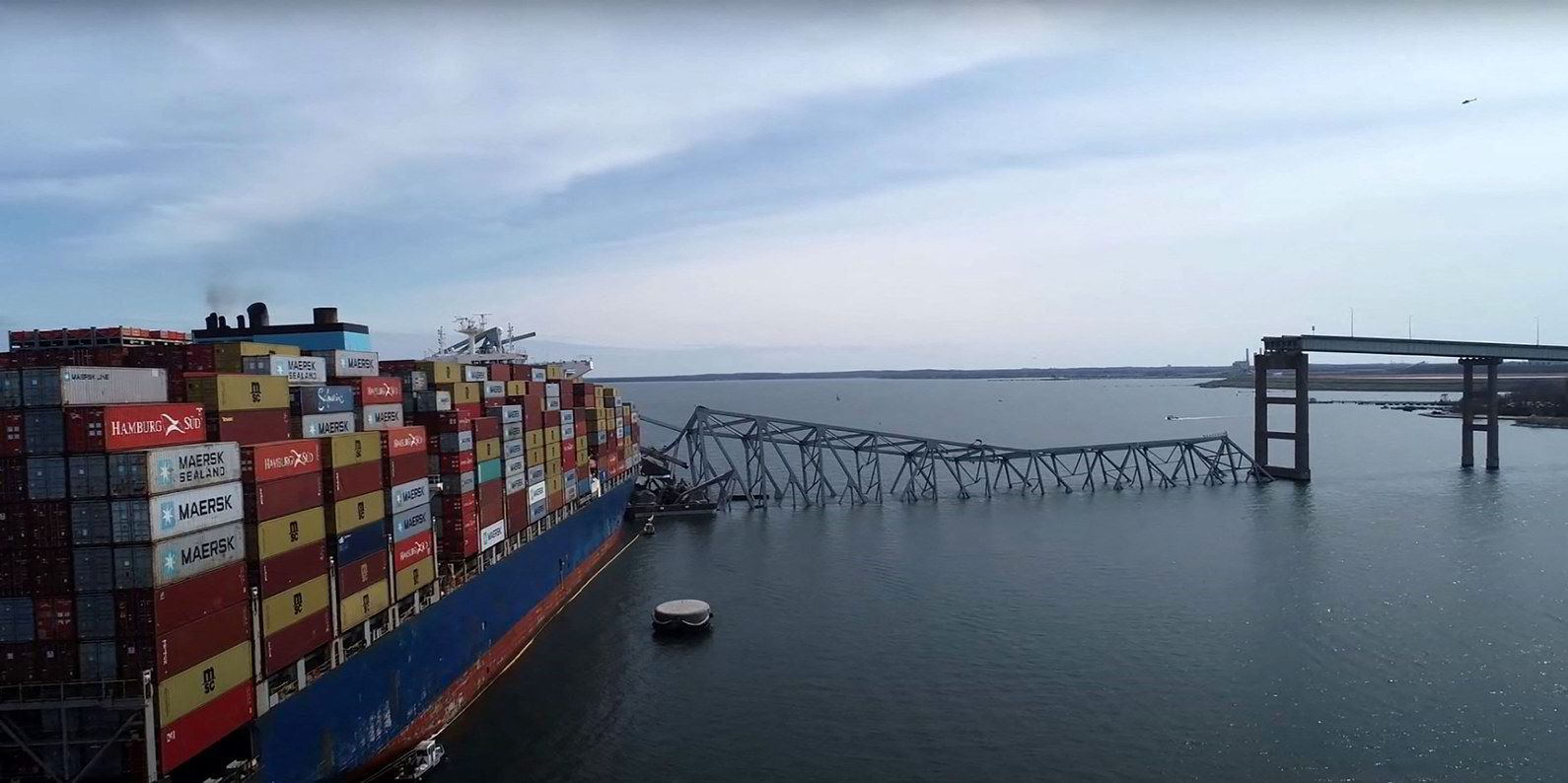A disaster of the magnitude of the Baltimore bridge collapse always writes a new history for the insurance sector, expert Patrizia Kern-Ferretti believes.
The chief insurance officer at digital insurance platform Breeze told TradeWinds the accident could recalibrate the industry’s approach to vessel risk.
The Maersk-chartered Dali (built 2015) destroyed the Francis Scott Key Bridge on Tuesday morning, resulting in the presumed death of six construction workers.
“Every time it’s a shock, because you think of the people involved,” Kern-Ferretti told TradeWinds.
“Insurance companies are there to pay insurance claims, but for life there is no indemnity.”
The vessel has a capacity of nearly 10,000 teu and was carrying close to half its capacity, she said.
“Very clearly here is a case where the insurance damage is potentially going to be huge. This was a relatively young ship,” she added.
Kern-Ferretti is a senior industry figure who chairs the Poseidon Principles for Marine Insurance and is marine strategy advisor at Swiss Re Corporate Solutions, one of the signatories.
Based on United Nations Conference on Trade & Development figures for the average $100,000 value of goods in a 40-foot container transported between China and the US, Kern-Ferretti calculates the cargo on board could be worth $500m.
“It’s a very rough estimation,” she admitted. “But this is nothing compared with the claim that will come from the bridge.”
Claims arising from this will include wreck removal expenses, compensation for other ships trapped inside the port, as well as others that were due to arrive, plus the vehicles that fell from the bridge.
“It’s an endless list,” she said.
“This is a massive catastrophe. The first thing is to find out where the responsibility is.”
The initial evidence appears to suggest an issue with the vessel, the insurance specialist added, “and in my very humble opinion, it was just an accumulation of unbelievable bad luck”.
She confirmed that Breeze had no insured cargo on board.
“In the end, the insurance is there to provide relief in time of distress,” she said.
“The worst thing is that there are unfortunately human lives that you cannot provide any relief for. Bridges can be rebuilt and ships can be rebuilt.”
Eventually there will be new risks that have to be factored into insurance costs, she argued.
“Because [with] every claim like this, you get a different perspective on the risk landscape that you very clearly need to factor in,” she told TradeWinds.
“The market is so spread that you cannot see the impact.”
Premiums depend on capacity in the insurance market.
“So claims are not the only driver for price increases,” Kern-Ferretti said.
“But definitely a claim like this should open our eyes toward the risks, because these are claims that can always happen. We need to factor it in.”
She said the insurance sector is always looking to lower this risk.
“We cannot build the bridge protection, but we can encourage and support safer risk management practice,” she added. “This is what we do every day.”
Follow TradeWinds’ coverage of the disaster here






